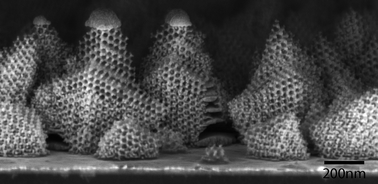Control of gyroid forming block copolymer templates: effects of an electric field and surface topography†
Abstract
The control over 10 nm scale porosity derived from

* Corresponding authors
a
Department of Physics, Cavendish Laboratories, and Nanoscience Centre, University of Cambridge, Cambridge, UK
E-mail:
u.steiner@phy.cam.ac.uk
b Freiburg Institute for Advanced Studies (FRIAS), University of Freiburg, Albertstraße 19, 79104 Freiburg, Germany
c Freiburg Materials Research Centre (FMF), University of Freiburg, Stefan-Meier-Str. 21, 79104 Freiburg, Germany
d Department of Chemistry, University of Minnesota, Minneapolis, MN 55455-0431, USA
The control over 10 nm scale porosity derived from

 Please wait while we load your content...
Something went wrong. Try again?
Please wait while we load your content...
Something went wrong. Try again?
E. J. W. Crossland, S. Ludwigs, M. A. Hillmyer and U. Steiner, Soft Matter, 2010, 6, 670 DOI: 10.1039/B914421H
To request permission to reproduce material from this article, please go to the Copyright Clearance Center request page.
If you are an author contributing to an RSC publication, you do not need to request permission provided correct acknowledgement is given.
If you are the author of this article, you do not need to request permission to reproduce figures and diagrams provided correct acknowledgement is given. If you want to reproduce the whole article in a third-party publication (excluding your thesis/dissertation for which permission is not required) please go to the Copyright Clearance Center request page.
Read more about how to correctly acknowledge RSC content.
 Fetching data from CrossRef.
Fetching data from CrossRef.
This may take some time to load.
Loading related content
